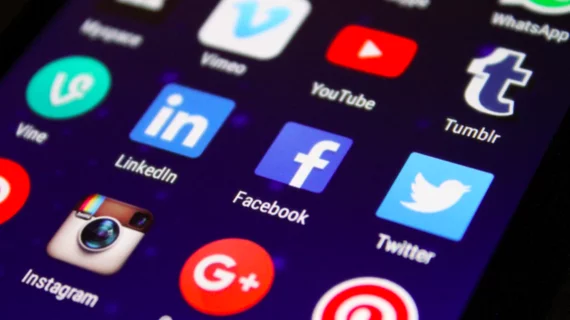Artificial intelligence (AI) is an immensely popular topic in radiology, sparking countless discussions and debates about whether it will give radiologists a new tool for providing high-quality patient care or end up replacing them altogether. Much of this dialogue has taken place in academic journals and medical conferences—but what do social media users have to say about AI’s influence on radiology?
A new study published in Current Problems in Diagnostic Radiology looked to address this very question, searching the popular social media platform Twitter for posts containing the terms “artificial intelligence” and “radiology.”
“Twitter provides a microblogging social media platform on which any individual or organization can post publicly available tweets, with 336 million monthly active users and an estimated 500 million tweets posted daily,” wrote authors Julia E. Goldberg and Andrew B. Rosenkrantz, MD, MPA, of the department of radiology at NYU Langone Health in New York City. “Within the academic radiology community, Twitter has increasingly been used at society meetings and for promoting academic discussions. On a wider scale, Twitter has been employed to assess social media discussions and public opinion on various clinical topics, providing insights into broader conversations among academic and non-academic perspectives.”
Goldberg and Rosenkrantz examined 605 tweets from November 2016 to October 2016. These are three key takeaways from their findings:
1. Discussions about AI in radiology tend to be extremely positive
More than 24 percent of tweets had a positive perspective on AI’s impact on radiology. More than 75 percent were neutral when it came to that specific aspect of the AI discussion. No tweets had a negative perspective on AI’s impact.
In addition, 88 percent of articles linked to in tweets looked at AI’s influence on radiology as positive. More than three percent examined both the positive and negative possibilities, while the others did not necessarily address either side. None of the linked articles was exclusively negative.
“While noting challenges, the discussions were overwhelmingly positive towards the transformative impact of AI on radiology and leaned against AI replacing radiologists,” the authors noted.
2. More than half of the tweets focused on AI-related improvements to efficiency and workflow
An impressive 51.9 percent of tweets mentioned ways AI could help improve radiologist efficiency or workflow. The second most common theme was legal/regulatory issues (17.6 percent) followed by ethical issues (4.6 percent).
3. Less than one in 10 of posts were made by radiologists
Industry-related individuals posted more than 22 percent of the tweets studied by Goldberg and Rosenkrantz, but radiologists posted just 9.3 percent of them. Non-radiology healthcare organizations (8.8 percent), non-radiologist physicians (7.1 percent) and media/marketing-related individuals (6.9 percent) were also responsible for a noteworthy number of tweets.
“Especially considering the large industry presence in this field, radiologists are encouraged to play a substantial role in the development and implementation of AI,” the authors wrote. “Radiologists can more fully engage with the expansion of AI though participating in these wider discussions, even if not working directly on these tools.”
Goldberg and Rosenkrantz did note that their research had some limitations, including the fact that it only focused on the words “artificial,” “intelligence” and “radiology.” Also, only English tweets were considered.

